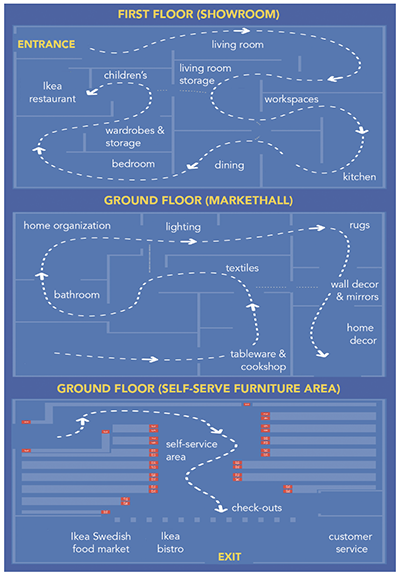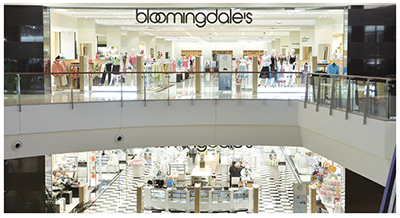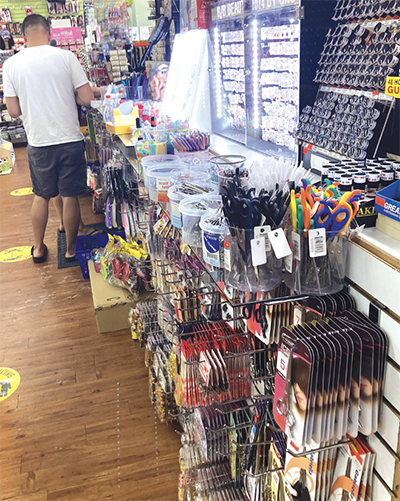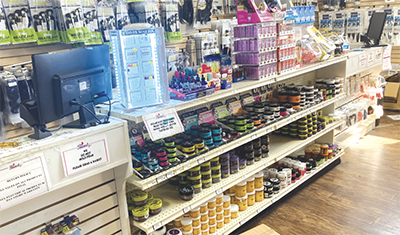A suggestion to beauty supply owners who chew over how to make the customers buy more
Beauty supply stores carry a myriad of goods. You can only hope that every item sells well, and owners often chew over how to sell better. A retail store changes the placement of merchandise every month or two. Manager C who oversees multiple locations of a beauty supply in Texas says, “once a month or two all the managers have long been gathering at a store for re-organizing the retail floor. Although it’s a hassle and hard work, we believe that replacement brings out the feel of a newly opened store, and customers get an impression that there are more new items than there actually are.”
When a customer enters a store with a specific item in mind, store managers and owners can do very little to make her buy more. However, they can still try hard to make her grab an extra item. A detailed analysis of “impulse buying” is covered in this issue, and if you come up with a right plan based on the knowledge about impulse purchase, you can possibly increase your sales revenue.
Generally speaking, impulse purchase is made when a customer buys a product without planning ahead of entering the store. In 1962, Stern came up with 4 different kinds of impulse purchases: pure impulse buying, reminder impulse buying, suggestion impulse buying, and planned impulse buying. Pure impulse buying is considered a true impulse purchase, where you have no desire to purchase an item before entering the store but still make the purchase due to the stimulation within the store.
According to a different study, customers can be divided into purposeful buyers, semi-purposeful buyers, and non-purposeful buyers, and only 20% of all customers are purposeful buyers who make purchases within the purchase plan while the remaining 80% falls into the non-purposeful buyers who make impulse purchases. A study found that it takes only 0.3 seconds for typical customers to make a purchase decision from the realization of purchase desire to the decision making.(Heungin Park, 2019)
Now, how are big corporations employing impulse purchase strategies? One of the most prolific companies of impulse purchase strategy is Swedish global furniture company IKEA. It is estimated that 60% of all purchases made at IKEA are impulse purchases. As you probably know, it takes about twenty to thirty minutes to browse even briefly an IKEA location. As opposed to placing items where a customer can easily locate, IKEA makes you turn many times to simply move to the next section. By using a staggered layout of merchandise, it makes customers spend more time finding an item of interest. In addition, as soon as you enter the store, you must pass showrooms to get to the section carrying household items. As you are made to tour the show rooms, you are more likely impulsive buying.

IKEA store layout
On average, you will walk 1.6 km by simply walking along the path throughout the store. Why does IKEA make customers walk such a long distance? It is for “Gruen effect” a psychological principle. Gruen effect is a term of art in psychology, which was named after architect Victor Gruen. It explains that when a consumer walks into a shopping mall or a store with an intentionally confusingly designed layout, they likely forget the original goal and become more vulnerable to stimulants.
There are more impulse purchase strategies inside an IKEA store. They strategically place mirrors at the corners of the show rooms, and when you look at yourself through the mirror, you feel like you are in the room. Moreover, IKEA’s showroom looks like a typical bedroom found at any home, and this familiarity promotes purchase. In addition, baskets filled with relatively inexpensive goods like puffed animals, slippers, and pillows are placed along the path intentionally. In sum, IKEA does not allow customers to simply pick an item of interest and leave the store. (Zachary Crockett, 2022)
You cannot talk about impulse purchase strategies without mentioning department stores. Anyone who has shopped at a department store might have an experience of impulse buying. When you stand before a department store mirror, you look so thin and feel like buying stuff that never interested you like magic. Behind this phenomenon, there is a marketing strategy.

First, the first floor of the department store does not have a restroom. The first floor is typically the most valuable retail floor, so it would be wasteful to have a restroom located. In addition, luxury goods, jewelry, and cosmetics should be favorably associated with luxurious brand image, which makes it preferable to be placed far from public restrooms.
Another reason is to attract people who visit the store for restrooms. To get to the second floor where the restroom is, you have to go around a distance and are forced to look around.
Second, department stores have many mirrors. People tend to walk slowly in front of a mirror. This can lead customers to take a longer look at the display shelves around it. In addition, the department store mirrors are designed to reflect your image vertically lengthened to look thinner and taller.
Third, the women’s section is on the lower floor and the men’s section is on the higher floor. The floor assignment is part of the marketing strategy. Men tend to buy only stuff they came to look for, so entangle these purposeful buyers, department stores draw them deep into the upstairs. While they travel to the upstairs to find the item they came for, they are led to view other merchandise under this strategy.
Lastly, department stores typically devote the highest floor to entertainment and leisure, which can attract customers and let them trickle down like a shower. Also, the absence of clocks and windows is part of an interior strategy, and the play of music based on the time of day and weather is a music strategy. Big box stores, too, play music to manipulate customer’s psychology. During a rush hour, they play up-tempo music, and for slower hours, slow music in order to influence the customer turnover rate. In fact, these strategies have proven to increase sales by 27% according to a study.
The impulse buying studies and case studies above can be applied to beauty supplies.
First of all, beauty supplies are not as big as department stores or IKEA, which makes it impractical to make a shopping path a maze like an IKEA. Instead, it is recommended that beauty supplies change the location of popular items frequently. Customers will look for those popular items and meanwhile view other products, which might trigger impulse buying. Nonetheless, changing the location of merchandise can be a daunting task. Manager K at a New Jersey beauty supply says, “we know changing the location of items does make a positive impact, but it is virtually impossible to make those changes even once a year. We are short-staffed and customers flock in around the clock.” If changing the entire sales floor is not practical, you can consider replacing items with those at different height levels of the same shelf unit. You can simply move up or down the merchandise from one level to another, which requires a much smaller amount of time and labor. Even a small store can try it.
Second, you place lighting fixtures at a place where you position items you want to drive sales. Loud music can trigger impulse buying and hinder the reasoning. A big beauty supply at Philadelphia plays playful music all day long throughout the business hours. “You can make sure that customers enter the store with a happy and lively mood by playing up-tempo music. Aside from customers, even the employees at the store can work more efficiently.” It’s much better and lively to have a little noise than to be too quiet.
Lastly, you utilize the so-called “golden zone”. Expensive and flagship items should be placed at the eye level, so customers can easily find and view. As shown in the below photo, you should place low-priced items like accessories and jewelry so that customers can grab one or two on their way out. If your store interior is modern and simple, it might be tempting to resist placing items around the cashier. However, you should know that items positioned near the counter generally sell well unless there is a special circumstance.

The proximity of the cashier at a beauty supply store

The proximity of the cashier at a beauty supply store
Impulse buying can happen when there is a carefully devised marketing strategy. However, it is of utmost importance that beauty supply owners should procure the high quality products so that impulse buyers do not regret after the purchase. In fact, most beauty supplies are local business and heavily supported by regular customers. An inadequate impulse purchase strategy might simply make the retail floor difficult to navigate. Therefore, beauty supply owners and managers should understand the needs of customers first and devise appropriate and tailored impulse buying strategies for their business.